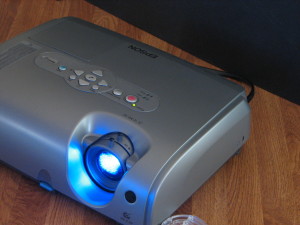 “Being bad” in the context of business meetings means breaking traditional rules about presentations.
“Being bad” in the context of business meetings means breaking traditional rules about presentations.
Being yourself—which probably involves making conventional “mistakes”—will help you win over the individuals listening to you speak.
That’s the premise of the refreshing new book, Be the Best Bad Presenter Ever, by best-selling author and improviser Karen Hough.
The author is also the CEO of ImprovEdge, which uses improvisation to teach and train business skills.
As an admirer of improv who prefers action that’s far away from any stage, I was curious to read the book. (Full disclosure: I recently received the book as a gift from the publisher, Berrett-Koehler Publishers. BK has a wonderful tradition of sending its authors one of its new books each year.)
The advice is practical, simple and relatively easy to implement—assuming you share the author’s point of view, as I do.
That point-of-view is that you need:
- A real purpose for your meeting. The idea of “giving a good presentation” doesn’t cut it.
- An emotional connection with the people listening to you.
- A way to use your emotional connection to start to move people into action to advance your purpose.
In our information-rich world, just sharing information in a presentation isn’t enough these days.
Information may scratch the “itch” that many of us have for more stuff, especially those of us who suffer from FOMO (fear of missing out) and crave certainty. After all, information can be just as rewarding as a gift card for some of us.
But just shoveling out stuff isn’t a good use of anyone’s meeting time. And information without action can easily become clutter.
Plus, if you’re not going to make an emotional connection, you might as well post a document on the company’s social network site, load it to the shared drive, or send out an email.
As Karen points out, when you meet with others either in person or virtually, you want to channel your passion, purpose and energy so you’ll make people feel something.
Those feelings can help incite individuals to do something. That could be to support the strategic initiative you’re implementing, consider your new idea, increase your budget, approve your project, try a new meeting format, or whatever intent you’ve determined in advance.
Now, even if people connect with you and are swayed by your purpose, it’s not realistic to expect someone to hear you and then spring into action.
Information by itself, even in a compelling, emotionally-laden presentation, is often too subtle, abstract and open-ended for people to do anything with it. It isn’t always clear what the next step is. “What? Me Act?” is a legitimate response.
And we’re often too lazy and invested in the status quo to want to do anything.
(For more about this, see the LinkedIn post Stop this myth: Communication = behavior change.)
You need to follow up your presentation with well-designed follow through, as the behavior designers call this support for getting people to take action. (Check out the blog post Follow through to support dots, spans and paths.)
Meanwhile, though, first follow this presentation advice. By concentrating on your purpose and your action, you improve your focus, which also will help you be more compelling.
Then practice both what you want to say and how you say it.
Don’t agonize over your PowerPoint presentation. People want to hear and see you rather than pictures, clip art and charts and graphs.
Then be yourself—that is, the engaging version.
Remember, real is better than fake.
Do you agree?

0 Comments